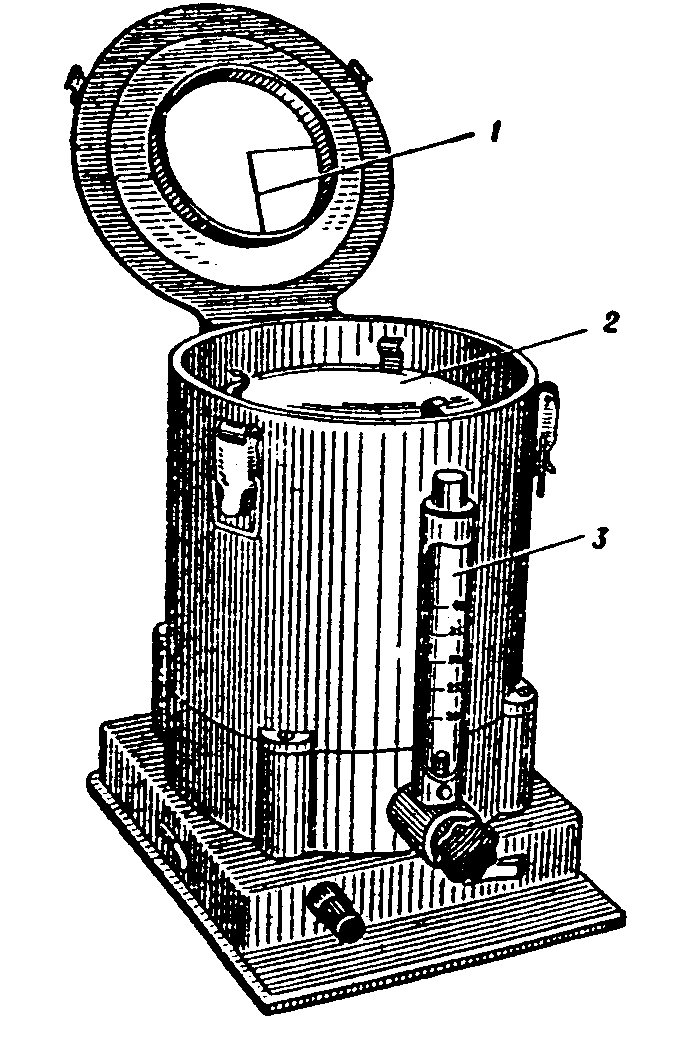
- •3. Self-training questions
- •4. Self-training assignments
- •5. Structure of the lesson
- •6. Literature
- •7. Equipment required for the lesson
- •Usage of the sun and artificial uvr sources for primary and secondary prophylaxis of chronic cardiovascular diseases
- •Irradiation duration in minutes.
- •Coefficients for exposure time modification on different distances from the lamp to the exposure place.
- •Appendix 2
- •Instruction on the determination of the efficiency of the air sanation by the uv irradiation
- •Approximate indices for the estimation of microbe air contamination (air clearance) for different premises.
- •Situational tasks
Coefficients for exposure time modification on different distances from the lamp to the exposure place.
Initial distance from the lamp, cm |
New distance, cm |
|||||
100 |
70 |
50 |
40 |
30 |
20 |
|
100 |
1.00 |
0.49 |
0.25 |
0.16 |
0.09 |
0.05 |
70 |
2.04 |
1.00 |
0.51 |
0.32 |
0.18 |
0.12 |
50 |
4.00 |
1.96 |
1.00 |
0.64 |
0.36 |
0.25 |
40 |
6.25 |
3.06 |
1.56 |
1.00 |
0.56 |
0.39 |
30 |
11.10 |
5.44 |
2.77 |
1.77 |
1.00 |
0.69 |
20 |
16.00 |
7.84 |
4.00 |
2.56 |
1.44 |
1.00 |
Appendix 2
Instruction on the determination of the efficiency of the air sanation by the uv irradiation
Planting of the air is performed on beef-extract agar or special agar in Petri dish in Krotov’s device (fig. 3.3) before irradiation (exposure) to estimate the air sanation efficiency. The irradiation is performed using the bactericidal lamps LB-30 or mercury-quartz lamps in accordance with the pre-calculated exposure. Replanting (secondary planting) of the air in Petri dish is done after the exposure. Dishes are incubated in the thermostat during 24 hours at the temperature of 370C. The number of colonies after the incubation is calculated in both Petri dishes before and after the exposure.
The air contamination with the microbes is estimated by determination of microbe air contamination index (microbe number) (the number of microorganisms per 1 m3 of the air) and the Staphylococcus hemalyticus population.
Microbe number is calculated using the following formula:
M.n. =
![]()
where: М.n. – number of microbes in 1 m3 of the air;
А – number of colonies in Perti dish;
Т – duration of air sampling in minutes.;
V –air transmission speed of Krotov’s device, l/min.
Efficiency degree and efficiency coefficient characterize the bactericidal effect of the UVR. Efficiency degree represents the percentage of decrease in the number of microbes. Efficiency coefficient represents by how many times the microbe number has decreased in the same air volume (colonies number disparity in Petri dishes before and after air exposure).

Fig. 3.3. Krotov’s device for bacterial research of the air
(1 – cone crack; 2 – rotating disk; 3 – rheometer)
Sanation is considered effective if the efficiency degree is 80%, and the efficiency coefficient is not less than 5. (Efficiency degree is the ratio of microbe number difference before and after exposure to microbe number before exposure in %. Efficiency coefficient is the number, which represents by how many times the number of colonies has decreased after the exposure).
Microbe number after the air exposure is compared to the allowed air contamination index for premises (table 3)
Table 3
Approximate indices for the estimation of microbe air contamination (air clearance) for different premises.
|
Microbe number, on m3 |
Air description |
|
General microbe number |
including Staphylococcus haemolyticus |
||
Residential premises |
up to 2 000 |
up to 10 |
Very pure |
Social premises |
2 000-4 000 |
11-40 |
Sufficiently pure |
Preschool institutions (children’s homes, schools etc.) |
4 000-7 000 |
40-120 |
Moderate contaminated |
>7 000 |
>120 |
High contaminated |
|
Operating-room : |
|
|
|
a) before operation |
up to 500 |
Must be none |
Pure |
b) after operation |
up to 1 000 |
Not more than 3 |
|
Dressing-room |
|
|
|
а) before the procedures |
up to 500 |
Must be none |
Pure |
b) after the procedures |
up to 2 000 |
Not more than 3 |
|
Manipulation room |
up to 1 000 |
up to 16 |
Very pure |
up to 2 500 |
up to 16 |
Sufficiently pure |
|
Hospital ward |
up to 3 500 |
up to 100 |
Pure |
The artificial UVR sources are widely used for medical treatment of rheumatism, neuralgic pain, cutaneous tuberculosis (scrofuloderma) and in surgery to speed-up operative, traumatic, war, purulent (septic) wound regeneration and their complications. The UVR effect on the wound consists of bactericidal properties, the speed-up of the purulent discharges rejection, kerato-plastic skin function stimulation, general analgetic effect. Artificial UVR sources of wide band (such as the direct mercury-quartz lamps) are used for this purpose.
The wound hydration, scarring and epithelization period (wound regeneration) are sped up during exposure of both the wound surface and the healthy structure around injury, which is the source of the regeneration process, to the UV radiation.
Appendix 3
